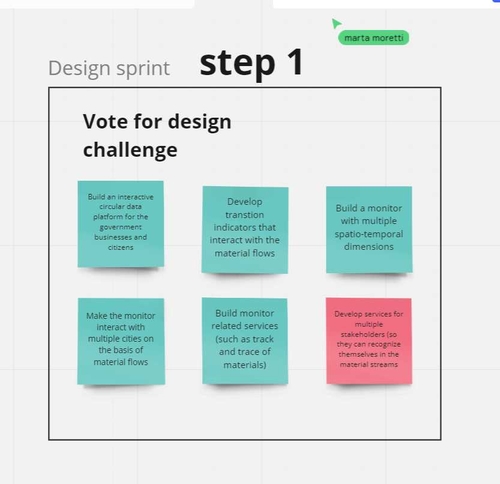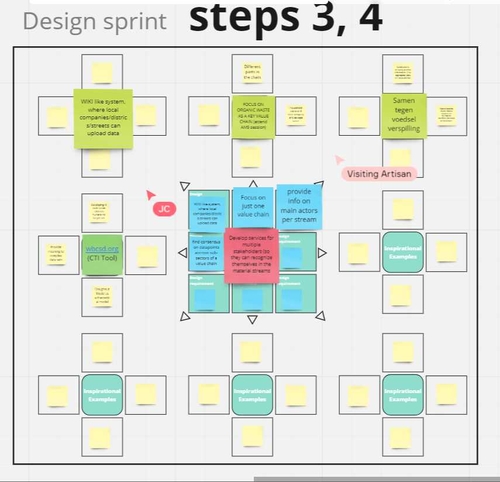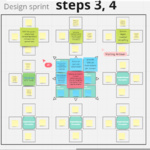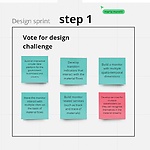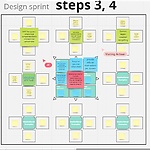This session was moderated by Mesiha Tepic and Juan-Carlos Goilo.
In the virtual co-design session, the following challenge was chosen to work on in the session: Develop services for different stakeholders, so they can recognize themselves in the material streams. The other possible challenges can be seen in photo 1.
Photo 1
Subsequently, design requirements were formulated for this challenge:
- Include subsectors (hotels, citizens, etc.)
- Interactive communication (people can bring in ideas)
- Provide info on main actors per stream
- Develop personas for different stakeholders
- Consensus on data points across subsectors of a value chain
- More detailed information about the commodity groups
- A system where local companies/districts/streets can upload data (to contextualize the data)
- Focus on just one value chain
- The frequency of informational needs
Subsequently, these design requirements were further grouped and linked to an inspirational example (see photo 2), including the Together against food waste initiative, the World Business Council for Sustainable Development and the AMS session on organic waste on 17 February.
In conclusion, the importance of stakeholder involvement was emphasized. The city cannot develop a monitor in isolation. Value chains are dynamic and the necessary data can only be obtained through stakeholders.
